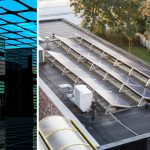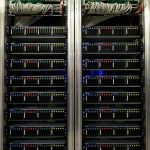
Rather than hesitating to face the change in technology, your facilities will be able to get a handle on it with the appropriate cooling solution. As chip capacity rises and construction costs rise, data centers must become more conversant with their alternatives for more efficient cooling, such as direct cooling systems, to realize their full potential.
The typical data center consumes a lot of power. That should go without saying, given the amount of processing power they have to squeeze onto a single data room, let alone the cooling system necessary to keep all of that equipment running at peak performance.
Data centers account for around 3% of global power use. Despite gains in efficiency, power consumption is anticipated to rise in the future years as even more energy-intensive buildings are built.
Raised floors with a CRAC or CRAH infrastructure were traditionally employed in data center cooling methods. The devices would compress the area underneath the elevated floor and force cold air into the server entrances through porous tiles.

This installation has a number of flaws, including inefficiency and a lack of fine-tuned monitoring. The data center was simply ventilated with cooler air. While this worked fine for modest, low-density setups with limited energy demand, it wasn’t as effective for bigger, higher-density data centers.
To maintain excellent and economical operating conditions, new data centers employ some sophisticated data center cooling systems. These options range from simple fans to far more sophisticated heat transfer devices.
Many firms are investing considerably in modern data center cooling methods to make sure that they will be able to leverage the computational power of the upcoming generation of CPUs as efficiencies rise.
Rather than cooling the same airflow repeatedly, some data center cooling systems employ the outside environment to deliver colder air inside the workstations. While this may only be used in particular regions, it is a very cost-efficient way to cool servers.








